Vagrant: Create Modern Development Environments
Vagrant, a tool designed to create and manage virtualized development environments, has become a cornerstone for many developers seeking to streamline their workflows

Introduction
In the realm of software development, the ability to replicate and manage development environments consistently is crucial. Vagrant, a tool designed to create and manage virtualized development environments, has become a cornerstone for many developers seeking to streamline their workflows. This article delves deep into Vagrant's history, its core concepts and architecture, the problems it solves, and how it compares to other tools in providing local development environments and virtualization. By the end, you will have a thorough understanding of Vagrant, its benefits, and practical applications.
Evolution of Development Environments
The journey of development environments has evolved significantly over the years. Initially, developers relied on manual setups on physical machines. This method was fraught with challenges, including inconsistencies across different development setups, time-consuming configurations, and the inevitable drift between development and production environments.
In the early days, developers often found themselves dealing with a myriad of issues due to the lack of standardization. Each team member might use a different operating system, different versions of dependencies, and various configurations, leading to a situation where software that worked on one developer's machine wouldn't work on another's. This inconsistency resulted in significant delays and frustration within development teams.
The advent of virtualization brought some relief, allowing developers to create isolated environments using virtual machines. Virtualization technologies like VMware and VirtualBox enabled developers to run multiple operating systems on a single physical machine, each in its isolated environment. This was a step forward, but it came with its own set of challenges. Setting up and managing virtual machines could be complex and time-consuming, often requiring significant manual effort to configure each VM according to the project’s requirements.
The Birth of Vagrant
Vagrant was born out of the need to address these challenges comprehensively. Mitchell Hashimoto, the creator of Vagrant, envisioned a tool that could simplify the creation and management of virtualized environments. Released in March 2010, Vagrant quickly gained traction within the developer community.
Mitchell's vision was to create a tool that allowed developers to create portable, reproducible, and easily configurable development environments. Vagrant aimed to automate the setup of development environments, making it easy to share these environments with team members and ensuring that they were consistent across different machines and platforms.
Initially, Vagrant focused on integrating with VirtualBox, a popular open-source virtualization tool. This integration allowed Vagrant to leverage VirtualBox’s capabilities while providing a simplified interface for managing virtual machines. Over time, Vagrant expanded to support other providers, including VMware, Docker, and even cloud platforms like AWS and Azure. This flexibility made Vagrant an even more powerful tool for managing development environments across a wide range of scenarios.
Core Problems Addressed by Vagrant
Vagrant was designed to solve several critical problems that plagued traditional development workflows. One of the primary issues was the inconsistency in development environments. Different developers often had different setups, leading to the infamous "it works on my machine" problem. Vagrant addresses this by providing a standardized environment configuration through a Vagrantfile, ensuring consistency across all development setups.
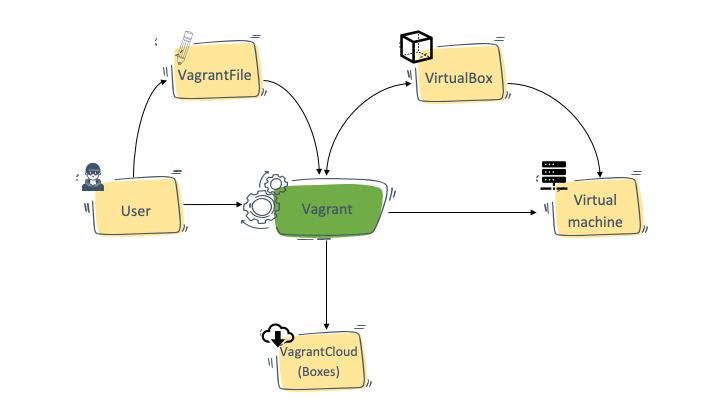
Another significant problem was the time-consuming process of setting up development environments. Manual configurations were not only tedious but also prone to errors. Vagrant automates this process, allowing developers to define their environment configurations in a Vagrantfile. This file includes details about the base operating system, software dependencies, and any necessary configuration scripts. When a developer runs vagrant up, Vagrant uses this configuration to automatically set up the environment, significantly reducing the time and effort required.
Sharing development environments across teams was another major challenge. Without a standardized setup, new team members often faced a steep learning curve, trying to configure their machines to match the rest of the team. Vagrant solves this by allowing developers to share their Vagrantfile, enabling new team members to spin up an identical environment quickly. This not only improves onboarding times but also ensures that everyone is working in the same environment, reducing the likelihood of environment-related issues.
Finally, Vagrant addresses the issue of environment drift between development, testing, and production. By using the same configuration file to set up environments at each stage, Vagrant ensures that these environments remain consistent, reducing the risk of bugs that only appear in certain environments. This consistency is crucial for modern DevOps practices, where the goal is to automate the entire development and deployment pipeline.
Vagrant’s Solution
Vagrant's solution to these problems is both elegant and powerful. At its core, Vagrant provides a way to automate the setup and management of development environments using a simple and flexible configuration file. The Vagrantfile is the heart of Vagrant, defining the base box (a pre-configured operating system image), software dependencies, and any necessary provisioning scripts.
The Vagrantfile is a Ruby-based configuration file that allows for extensive customization. Developers can specify various aspects of their environment, including the operating system, network settings, shared folders, and more. This level of customization ensures that Vagrant can be used for a wide range of development scenarios, from simple web applications to complex distributed systems.
Vagrant supports multiple providers, allowing it to work with various virtualization and containerization technologies. While VirtualBox is the default provider, Vagrant also supports VMware, Docker, Hyper-V, and even cloud providers like AWS and Azure. This flexibility allows developers to choose the best provider for their needs, whether they require the isolation of virtual machines or the lightweight nature of containers.
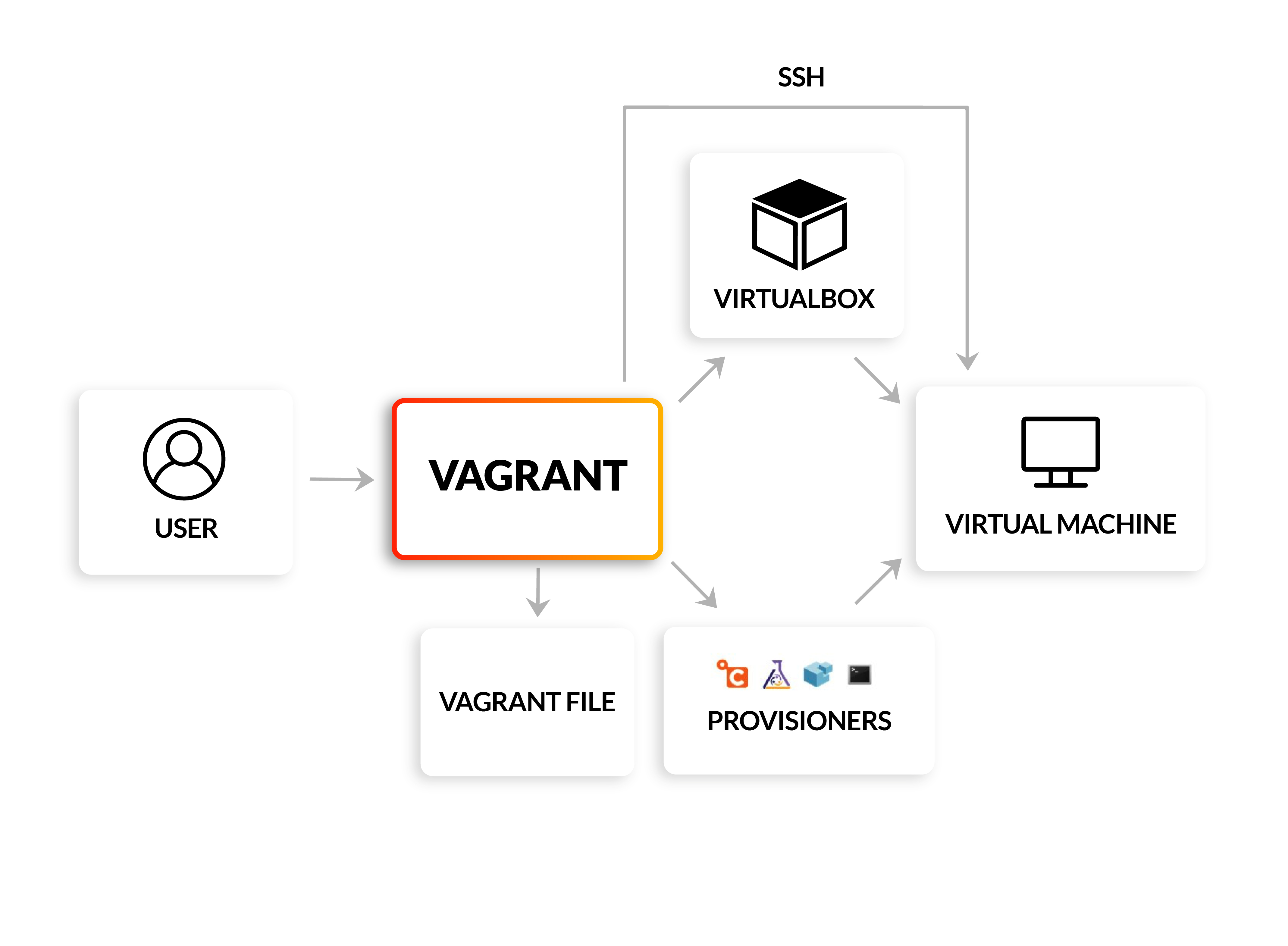
Provisioning is another key aspect of Vagrant's solution. Provisioners are scripts or tools that run automatically when a Vagrant environment is created, configuring the environment according to the project's needs. Vagrant supports several provisioners out of the box, including shell scripts, Ansible, Chef, and Puppet. This allows developers to automate the installation of software, configuration of services, and any other setup tasks required for their environment.
Networking is another area where Vagrant excels. Vagrant allows developers to configure network settings for their virtual machines, including port forwarding, private networks, and public networks. This flexibility makes it easy to set up complex networking scenarios, such as multi-machine environments where different services run on different VMs and communicate with each other.
Benefits of Vagrant
The benefits of using Vagrant in a development workflow are numerous. One of the most significant advantages is the consistency it brings to development environments. By using a Vagrantfile to define the environment, developers can ensure that their environments are identical, regardless of the underlying operating system or hardware. This consistency reduces the number of environment-related bugs and makes it easier to reproduce issues.
Another major benefit is the efficiency gained from automating the setup of development environments. Manual setup processes are time-consuming and prone to errors, but Vagrant’s automated approach significantly reduces the time and effort required. This increased efficiency allows developers to focus more on writing code and less on managing their environments.
Vagrant’s flexibility is another key benefit. With support for multiple providers and provisioners, Vagrant can be used for a wide range of development scenarios. Whether you need a simple environment for a web application or a complex multi-machine setup for a distributed system, Vagrant provides the tools to create and manage these environments effectively.
The portability of Vagrant environments is also a significant advantage. By sharing the Vagrantfile, developers can easily distribute their environments to team members, ensuring that everyone is working in the same setup. This portability is particularly useful for onboarding new team members, as they can quickly spin up an identical environment and start contributing to the project.
Finally, Vagrant’s integration with modern DevOps practices makes it a valuable tool for automating the entire development and deployment pipeline. By using the same Vagrantfile to set up environments at each stage of the pipeline, Vagrant ensures consistency and reduces the risk of environment-related issues. This integration is crucial for achieving the goals of DevOps, which include automating workflows, improving collaboration, and delivering software more efficiently.
Core Concepts and Architecture
Understanding Vagrant’s core concepts and architecture is crucial for leveraging its full potential. At the heart of Vagrant is the Vagrantfile, a Ruby-based configuration file that defines the environment. The Vagrantfile specifies various aspects of the environment, including the base box, network settings, shared folders, and provisioning scripts.
The base box is a pre-configured operating system image that serves as the starting point for the environment. Vagrant provides a wide range of official boxes for different operating systems, including Ubuntu, CentOS, and Windows. Developers can also create their custom boxes or use third-party boxes from the Vagrant Cloud.
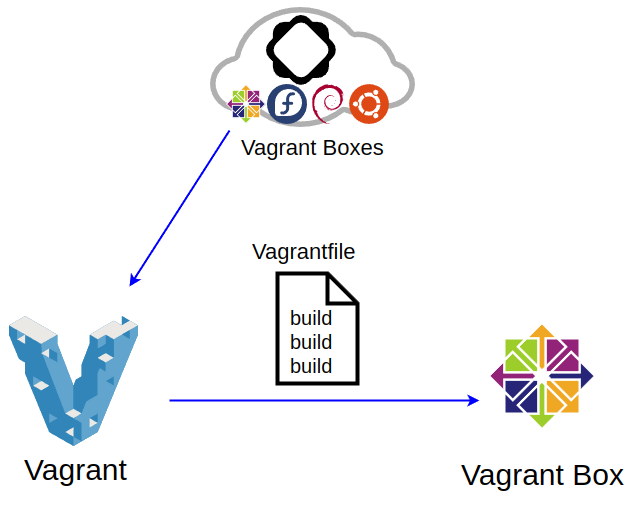
Providers are another key component of Vagrant’s architecture. A provider is a virtualization or containerization technology that Vagrant uses to create and manage environments. While VirtualBox is the default provider, Vagrant also supports VMware, Docker, Hyper-V, and cloud providers like AWS and Azure. This flexibility allows developers to choose the best provider for their needs, whether they require the isolation of virtual machines or the lightweight nature of containers.
Provisioners are scripts or tools that run automatically when a Vagrant environment is created, configuring the environment according to the project's needs. Vagrant supports several provisioners out of the box, including shell scripts, Ansible, Chef, and Puppet. This allows developers to automate the installation of software, configuration of services, and any other setup tasks required for their environment.
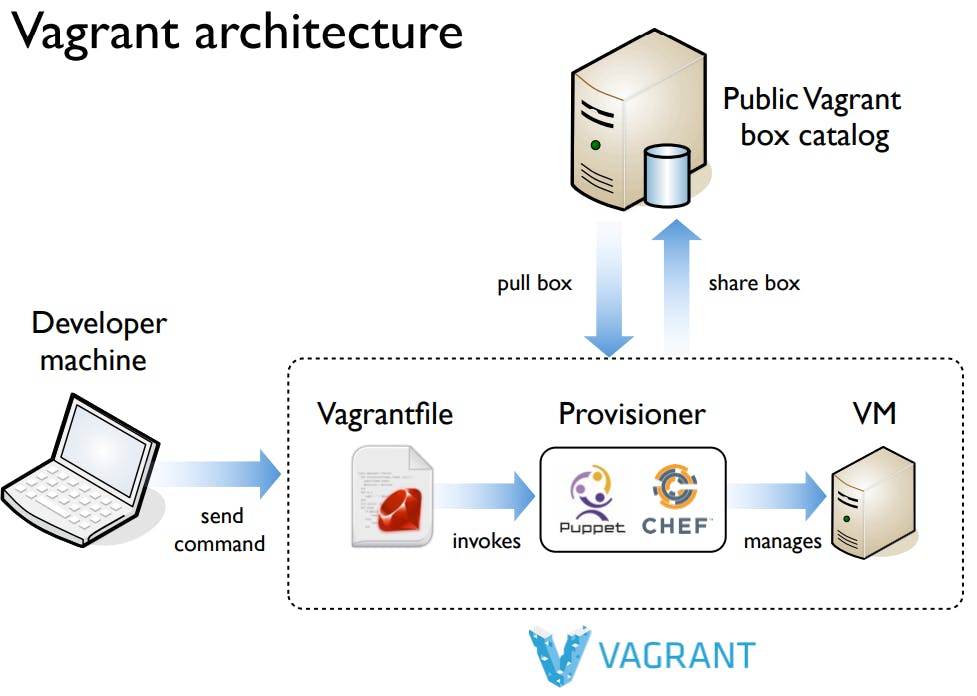
Networking is another area where Vagrant excels. Vagrant allows developers to configure network settings for their virtual machines, including port forwarding, private networks, and public networks. This flexibility makes it easy to set up complex networking scenarios, such as multi-machine environments where different services run on different VMs and communicate with each other.
Synced folders are another important feature of Vagrant, enabling file sharing between the host machine and the virtual machine. This feature is particularly useful for development workflows, as it allows developers to edit files on their host machine and have those changes reflected in the virtual machine in real-time. Vagrant supports several types of synced folders, including shared folders in VirtualBox, NFS, and Rsync.
Comparison with Other Tools
To fully understand Vagrant’s place in the ecosystem, it’s essential to compare it with other tools that provide local development environments and virtualization.
Comparison in Providing Local Development Environments
Vagrant vs. Docker
Docker and Vagrant are often compared because they both aim to simplify the development environment setup. However, they approach this goal in fundamentally different ways. Docker is a containerization tool that allows developers to package applications and their dependencies into lightweight, portable containers. These containers can run on any system that supports Docker, providing consistency across development, testing, and production environments.
Vagrant, on the other hand, uses virtual machines to create isolated environments. While VMs are more resource-intensive than containers, they provide a higher level of isolation and can run a full operating system. This makes Vagrant more suitable for scenarios where developers need to replicate an entire environment, including the operating system, or when working with software that requires a full VM.
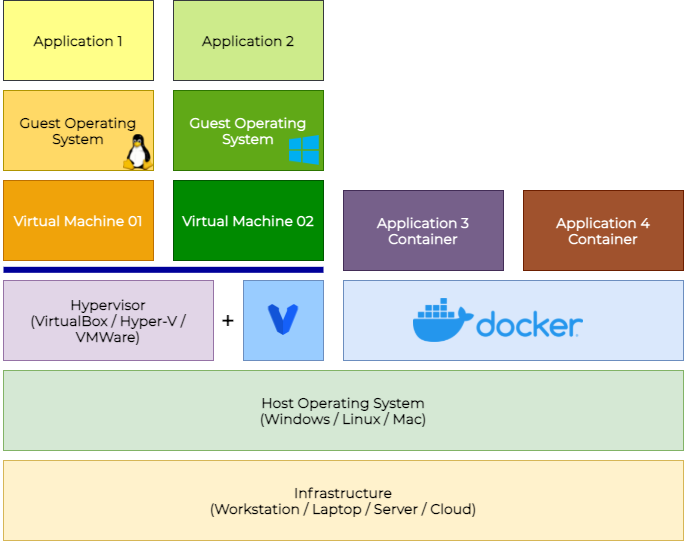
One of the main strengths of Docker is its efficiency. Containers share the host system’s kernel, which makes them much more lightweight and faster to start than VMs. This efficiency is particularly beneficial for microservices architectures, where applications are composed of many small, independent services.
Vagrant’s strength lies in its flexibility and ease of use. The Vagrantfile allows for extensive customization of the environment, and Vagrant’s support for multiple providers means that developers can choose the best tool for their needs. While Docker excels at packaging and running applications, Vagrant is better suited for creating and managing development environments that require a full operating system.
Vagrant vs. NixOS
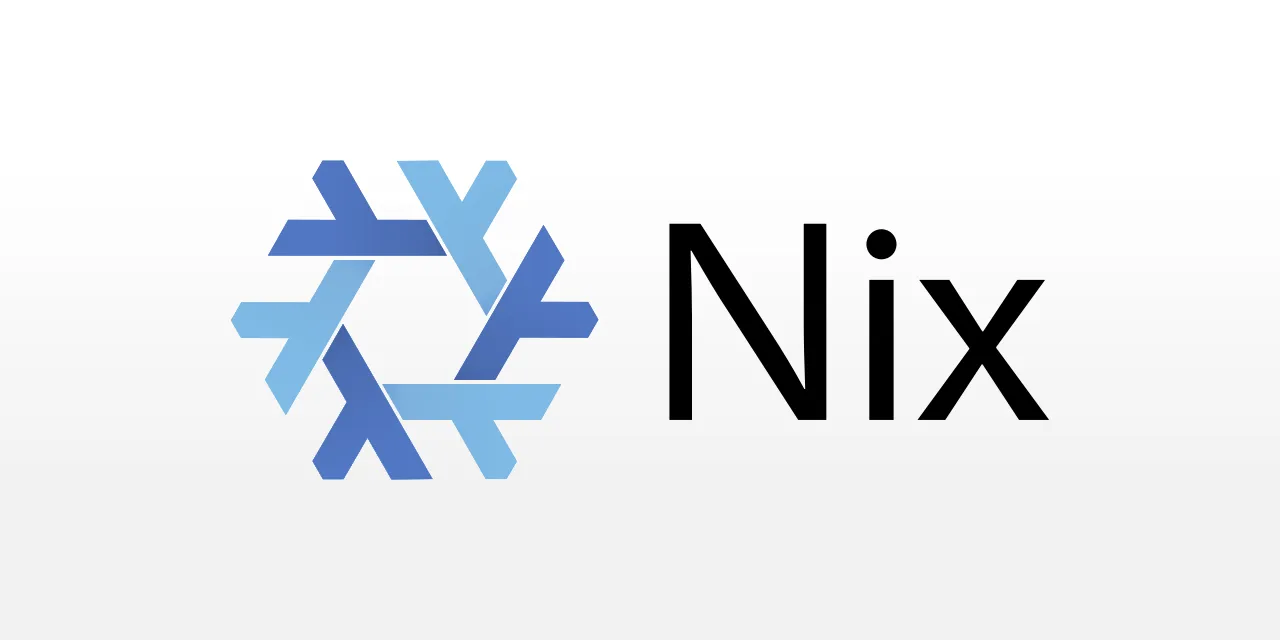
NixShell is a tool that allows you to define and enter development environments using the Nix package manager, without requiring a full NixOS installation. It provides a reproducible and isolated environment for development by leveraging the declarative nature of Nix expressions.
The key difference between Vagrant and NixShell lies in their approach to environment configuration and management. NixShell uses a declarative configuration model where the desired state of the environment, including all dependencies and configurations, is described in a Nix expression. This ensures a high level of reproducibility and consistency, as the environment is fully defined by the configuration file. Once a Nix expression is written, it can be used to create identical environments on any machine that has the Nix package manager installed.
Vagrant, on the other hand, uses a procedural configuration model where the steps to set up the environment are specified in a Vagrantfile. This allows for a more step-by-step and flexible approach to environment setup, where the exact sequence of provisioning commands can be controlled. Vagrant’s procedural approach is particularly useful when complex provisioning tasks need to be performed in a specific order.
NixShell’s declarative approach simplifies the process of creating reproducible environments, but it is inherently tied to the Nix package manager. This means that NixShell environments are most easily used on systems where Nix can be installed.
Vagrant’s procedural approach provides broader flexibility, as it can work with any operating system and supports a wide range of providers and provisioners. This makes Vagrant a more versatile tool for creating and managing development environments across different platforms, whether you are using Windows, macOS, or any flavor of Linux.
Comparison in Providing Virtualization
Vagrant vs. VirtualBox
VirtualBox is an open-source virtualization tool that allows users to run multiple operating systems on a single physical machine. Vagrant uses VirtualBox as its default provider, leveraging its capabilities to create and manage virtual machines.
The key difference between Vagrant and VirtualBox is their role in the ecosystem. VirtualBox is a hypervisor, providing the underlying technology for running virtual machines. Vagrant, on the other hand, is a management tool that simplifies the process of creating and configuring these virtual machines.
Using VirtualBox directly can be complex, as it requires manual configuration of VMs, network settings, and shared folders. Vagrant abstracts away this complexity, allowing developers to define their environment in a Vagrantfile and automate the setup process. This makes Vagrant much easier to use for managing development environments.
Vagrant vs. VMware
VMware is a commercial virtualization tool that provides high-performance virtual machines with advanced features. Vagrant supports VMware as a provider, allowing developers to leverage VMware’s capabilities within their Vagrant environments.
The main difference between Vagrant and VMware is their focus. VMware is a hypervisor that provides robust virtualization features for enterprise environments. Vagrant is a management tool that simplifies the process of creating and configuring virtual machines, regardless of the underlying hypervisor.
Using Vagrant with VMware provides the best of both worlds: the performance and features of VMware’s virtualization technology, combined with the simplicity and automation of Vagrant. This combination is particularly useful for enterprise environments where performance and advanced features are critical.
Combined Use in Development Environments
Vagrant and Docker can be used together to create hybrid development environments that leverage the strengths of both tools. For example, developers can use Vagrant to manage virtual machines that provide the base environment, while using Docker to run lightweight containers within these VMs.
This approach provides several benefits. Vagrant ensures that the base environment is consistent and reproducible, while Docker allows developers to run applications in isolated containers that are easy to manage and deploy. This hybrid setup is particularly useful for complex development scenarios, such as microservices architectures, where different services may require different environments.
Getting Started
To illustrate the practical applications of Vagrant, let’s walk through some real-world examples and step-by-step guides.
Creating a Basic Vagrant Environment
To create a basic Vagrant environment, start by installing Vagrant and VirtualBox. Once installed, create a new directory for your project and initialize a new Vagrant environment:
~$ mkdir vagrant-8grams
~$ cd vagrant-8grams
~$ vagrant initThis command creates a Vagrantfile in the current directory. Open the Vagrantfile in your text editor and configure the environment:
Vagrant.configure("2") do |config|
config.vm.box = "ubuntu/jammy"
config.vm.network "private_network", type: "dhcp"
config.vm.synced_folder ".", "/vagrant"
endThis configuration sets up a Vagrant environment using the ubuntu/jammy64 box, configures a private network, and sets up a synced folder. To start the environment, run:
~$ vagrant upVagrant will download the specified box, create a virtual machine, and configure it according to the Vagrantfile. You can then SSH into the VM:
~$ vagrant sshBasic Provisioning with Shell
By default, we can provision our VM with Shell. This is the basic provisioning provided by Vagrant
# vagrantfile
$script = <<-SCRIPT
echo Hello 8grams...
date > /etc/vagrant_shell_provisioned
SCRIPT
Vagrant.configure("2") do |config|
config.vm.box = "ubuntu/jammy64"
config.vm.network "private_network", type: "dhcp"
config.ssh.insert_key = false # do not generate new key pair
config.vm.provision "shell",
# using inline shell
# inline: "echo Hello, 8grams!"
# using script
inline: $script
# using remote file
# path: "https://8grams.tech/provisioner.sh"
endProvisioning with Ansible
To automate the setup of software and services, use a provisioner like Ansible. First, install Ansible on your host machine. Then, modify the Vagrantfile to include the Ansible provisioner:
Vagrant.configure("2") do |config|
config.vm.box = "ubuntu/jammy64"
config.vm.network "private_network", type: "dhcp"
config.ssh.insert_key = false # do not generate new key pair
# https://developer.hashicorp.com/vagrant/docs/provisioning/ansible
# Need ansible installed in Host OS
config.vm.provision "ansible" do |ansible|
ansible.playbook = "./playbook.yaml"
end
endAnd the example of playbook.yaml
Provisioning Docker Image
Vagrant can also be used to run Docker Container as drop-replacement for VM. Running a development environment using Container instead of VM gives many benefits. It offers fast boot-up, lightweight, and need smaller resources compared to VM.
To use Docker Provisioner, first, we need to create our own docker image. Dockerfile example below will give you a glimpse how to work with Docker in Vagrant. Basically, we need to add Vagrant's SSH, so we will able to use vagrant ssh to our container created by Vagrant:
And then, we need to generate public key from Vagrant SSH Key.
~$ ssh-keygen -y -f ~/.vagrant.d/insecure_private_keys/vagrant.key.rsa > vagrant.key.pubBuild Docker Image
~$ docker build . -t ubuntu-8gramsFinally, we can create our Vagrantfile, and provision the image we created before to container.
Vagrant.configure("2") do |config|
config.vm.provider "docker" do |d|
d.image = "ubuntu-8grams"
d.has_ssh = true
d.name = "ubuntu-8grams"
# keep it running
d.remains_running = true
end
config.vm.network "forwarded_port", guest: 22, host: 2222, id: "ssh"
config.ssh.insert_key = false
endRun the container
~$ vagrant up --provider=docker --debugWe can also login to container using Vagrant SSH
~$ vagrant ssh